What is Bamboo Viscose (aka Rayon)?
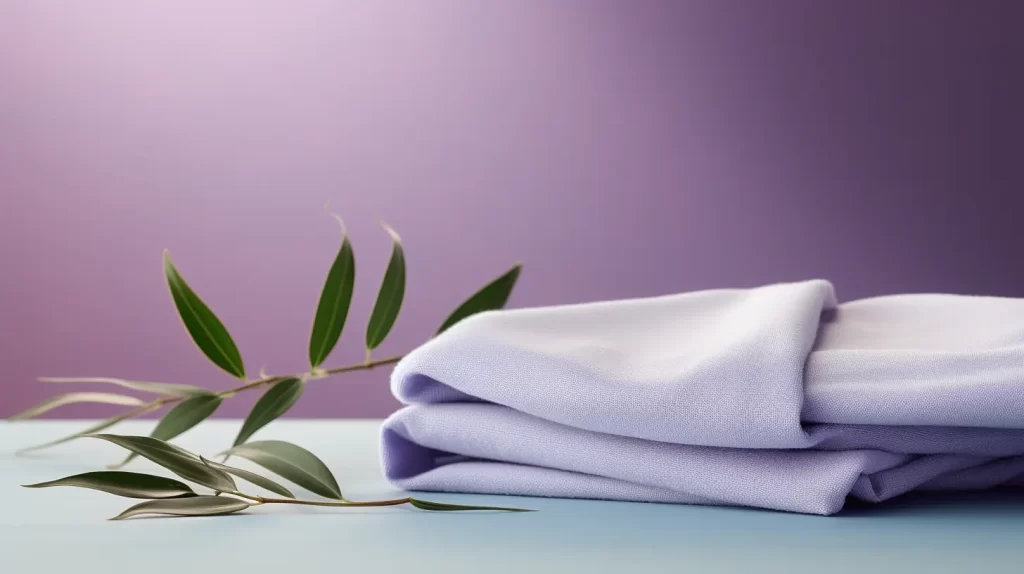
Hey there! Let’s talk about Bamboo Viscose, also known as Rayon. What is bamboo viscose? It’s this cool, semi-synthetic fabric that’s made from cellulose fiber, which comes from bamboo. Bamboo viscose is all the rage in the fashion world right now, thanks to its versatility. People love it not just because it’s comfortable, but also because it’s seen as a friendlier choice for our planet. It’s kind of a big deal in sustainable fashion. Plus, it’s not too hard to make, which means it doesn’t burn a hole in your wallet. In this article, we’re going to dive into what makes bamboo viscose so awesome for us consumers, how it’s used in clothes and other stuff, and some of its cool perks.
Key Takeaways
- Bamboo viscose feels super soft and luxurious. It’s like a hug in fabric form!
- It’s got this neat trick of being breathable and moisture-wicking, so it keeps you feeling fresh and comfy.
- Bamboo viscose is all about sustainability. It comes from bamboo, which is a renewable resource, and has a smaller environmental footprint.
- Just a heads-up: making bamboo viscose does involve chemicals. It’s always smart to check out where and how your clothes are made.
- And yes, in case you were wondering, bamboo viscose is pretty much the same thing as bamboo rayon. They’re like twins with different nicknames!
This following content is rather lengthy, but read on for more details!
Table of Contents
Introduction to Bamboo Viscose (Rayon)
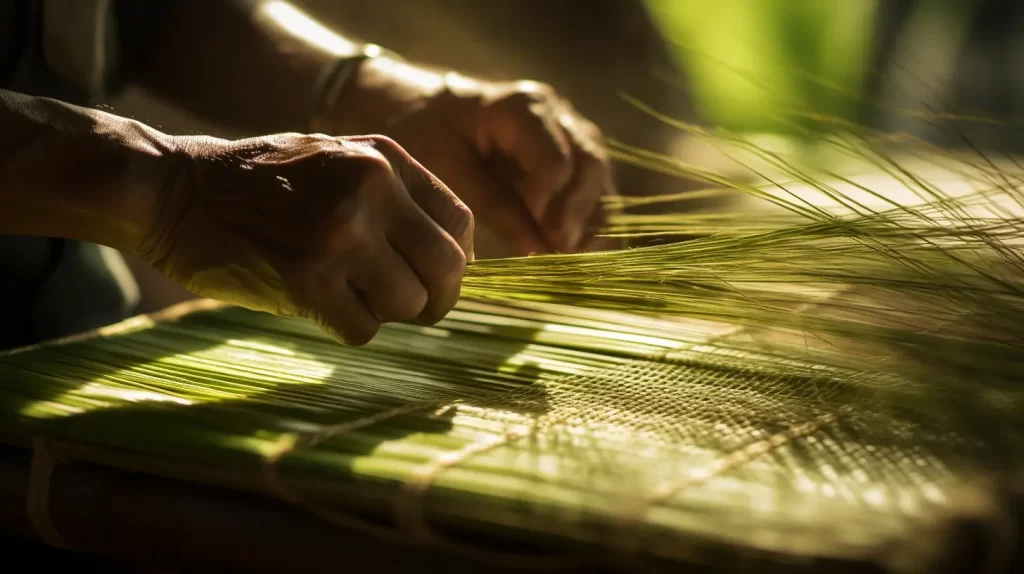
So, let’s get into what bamboo viscose, or rayon, really is. Imagine taking bamboo, which is kind of a superstar in the plant world, and transforming it into a super comfy fabric. That’s bamboo viscose for you! This man-made fiber comes from bamboo cellulose, which goes through a bit of a makeover. It’s dissolved in a special chemical solution and then magically spun into fibers. This process gives us bamboo viscose, known for being super soft, breathable, and great at soaking up moisture. It’s a big hit for clothes and making your home look and feel cozy.
One of the coolest parts? Bamboo viscose is a bit of an eco-hero. It’s biodegradable, meaning it can break down naturally and go back to nature. Plus, it doesn’t ask for much — no need for stuff like petroleum or oil in its making. If you’re all about comfort, keeping things green, and loving innovative stuff, bamboo viscose is your go-to fabric.
Key Benefits of Bamboo Viscose for Consumers
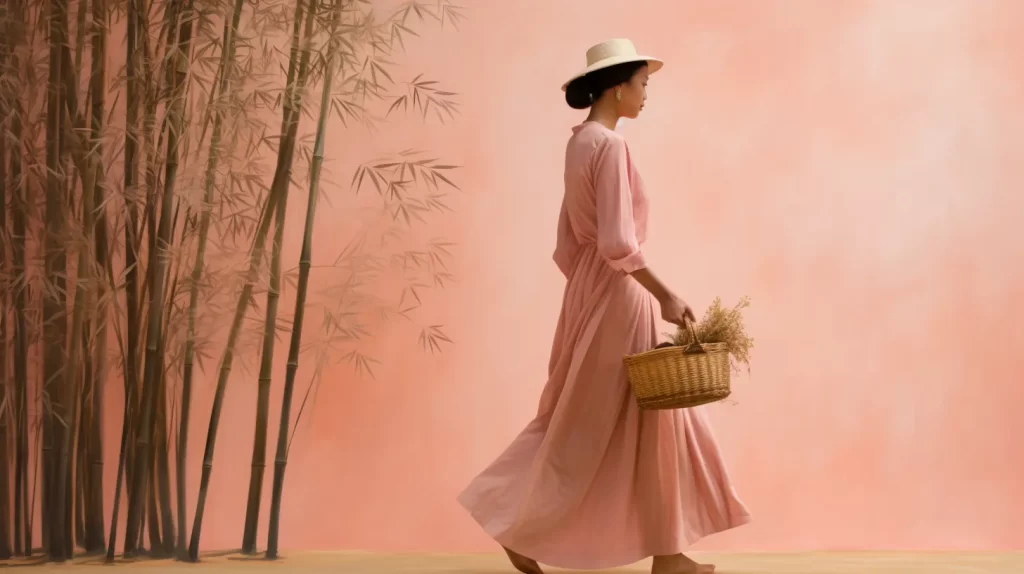
Why is Bamboo Viscose a rising star in the world of fabrics? It’s got some pretty neat features that are winning over hearts everywhere. Let’s dig in a little more.
The Feel-Good Factor: Softness and Comfort of Bamboo Viscose
While bamboo viscose isn’t quite as silky as silk, it’s definitely a contender in the comfort department! This fabric is known for its lightweight and smooth texture, making it a delight to wear. Its natural breathability adds to its appeal, offering a comfortable experience, especially in warmer climates or for active wear. Plus, its absorbent nature means it can handle moisture well, keeping you feeling dry and comfortable.
It’s worth noting that while bamboo in its raw form has hypoallergenic properties, the extent to which these are preserved in bamboo viscose can vary depending on the manufacturing process. So, if you have sensitive skin, it’s still a good idea to check how the fabric was made. As for durability, bamboo viscose is quite resilient and manages to resist wrinkles, which is great for both everyday wear and those special occasions when you want to look effortlessly chic.
Stay Cool and Dry: Breathability and Moisture Wicking of Bamboo Viscose
If staying cool and dry is your game, bamboo viscose is the name. This fabric is a pro at letting your skin breathe and wicking away sweat, keeping you as cool as a cucumber. It’s incredibly light and airy, perfect for those hot summer days or intense gym sessions. Not to mention, its versatility makes it perfect for all sorts of clothes and accessories. Bamboo viscose is like the Swiss Army knife of fabrics – it’s got you covered in all situations!
I know we always focus on how bamboo let’s you stay cool, however, I would also like to point out that we use bamboo sheets in our house. Since my wife and I have vastly different temperatures we like to sleep at, having bamboo as our sheets allows us to start at a common base and then it makes it super easy for one of us to just add an additional blanket. Having this flexibility in a northern climate is flat out awesome.
Hygienic and Fresh: Antibacterial Properties of Bamboo Viscose
Now, let’s clear the air about something. While bamboo viscose is breathable and lightweight, its antibacterial properties aren’t as clear-cut. The process it goes through to become fabric might change these properties a bit. But, it’s still a fantastic choice for staying fresh and clean. Just a heads-up: bamboo viscose and lyocell are cousins, but not quite twins. Lyocell is made with a different, more eco-friendly process. Both are great, but they’ve got their own unique perks!
Key Benefits of Bamboo Viscose for Consumers:
- Friendly for those with sensitive skin.
- A thumbs up for the environment, being sustainable and all.
- Soft, light, and has a bit of a sheen that makes you look and feel fab.
Applications in Clothing and Textiles
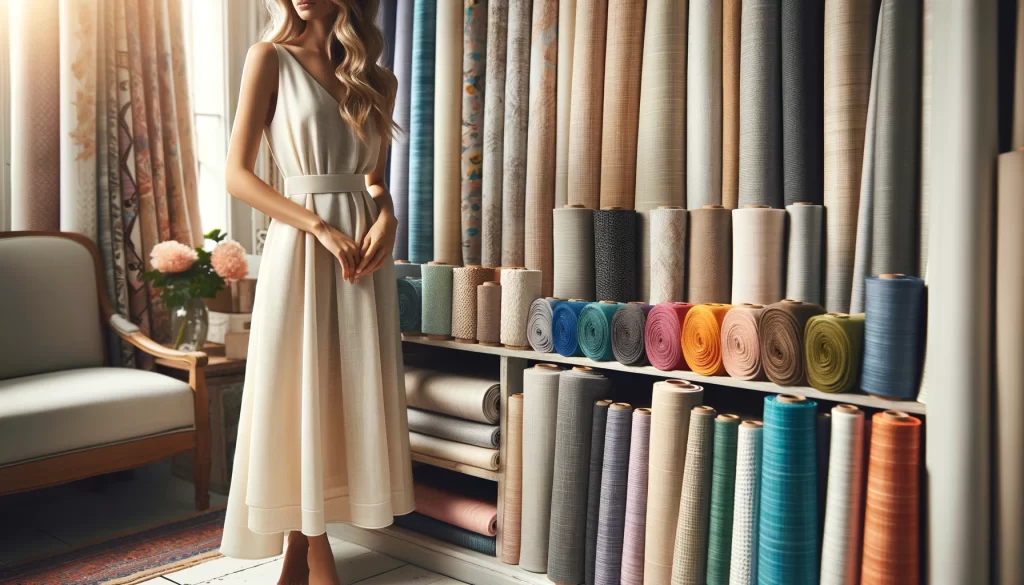
Bamboo Viscose is a versatile fabric with many applications in clothing and textiles. It is known for its durability and gentleness on the skin, making it ideal for a variety of styles. In the following sections, we will explore the various ways in which Bamboo Viscose is used in clothing and textiles.
Fashionably Versatile: Bamboo Viscose in Different Clothing Styles
Bamboo viscose is like the chameleon of fabrics – it fits in just about anywhere! Also known as rayon when it’s made from bamboo, this fabric is all about versatility. It’s a lightweight hero, super breathable, and has this amazing ability to drape just right, making it a top pick for those breezy and stylish summer outfits. Here’s where bamboo viscose really shines:
- It’s perfect for crafting those airy blouses, casual shirts, and flowy dresses that make summer feel cooler.
- Bamboo viscose steps up its game for formal wear too. Think sleek suits, sharp jackets, and classy trousers.
- And for those lounge-around days? It’s great for comfy loungewear like pajamas and nightgowns.
- With its wicking nature, it helps you stay dry when its cold outside which is a huge factor in staying warm as well!
Gentle on Skin: Why Bamboo Viscose is Great for Sensitive Skin
For those of you with sensitive skin, bamboo viscose is like a soothing balm. Its softness and breathability are a match made in heaven for comfort. It’s made from a blend of natural bamboo pulp and man-made materials, which gives it a silky texture that’s super gentle against the skin. Here’s what makes it stand out:
- It’s incredibly absorbent, so it’s fantastic for clothing that’s in close contact with your skin, keeping you dry and comfortable.
- The fabric’s airy nature allows for great air circulation, helping to regulate your body temperature and keep you cool.
Wear and Care: The Durability and Maintenance of Bamboo Viscose Fabrics
Bamboo viscose is not just about looking good; it’s also about being easy-going in your wardrobe. Sure, it likes a bit of special care, but nothing too demanding!
- Easygoing Wash: Bamboo viscose is happiest with a gentle wash in cold water. This keeps it from shrinking and maintains the integrity of the fibers. It’s a small step for a big return in fabric quality.
- Staying Strong: This fabric might feel super soft, but don’t underestimate its strength. It resists pilling and fading, so your favorite pieces stay looking fresh.
- Gentle Drying: Post-wash, bamboo viscose prefers a chill drying session. A low heat setting in the dryer works, but air drying is its best friend. This way, you avoid any potential shrinkage and keep the fibers in top shape.
- Comfort Factor: With its great absorbency and enduring softness, bamboo viscose keeps you comfy all day. It’s the kind of fabric that makes you feel good, both for its feel and its low environmental impact.
So, while bamboo viscose has a few specific care needs, they’re pretty straightforward and well worth the effort for the comfort and style it offers.
Comparative Advantages
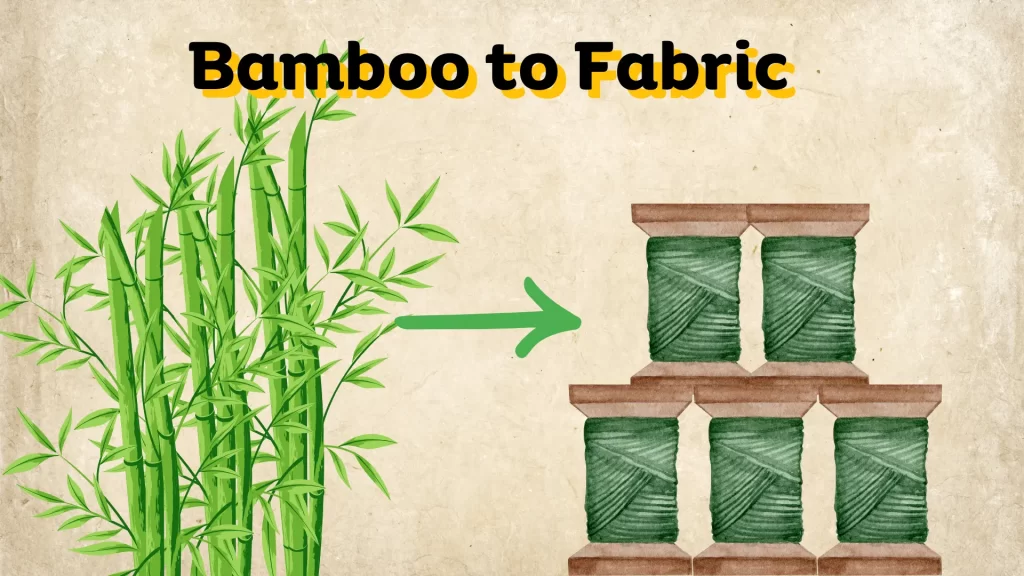
Curious about how bamboo viscose stacks up against traditional fabrics? You’re in for some interesting insights! Let’s unravel the unique qualities of bamboo viscose and see why it’s making waves in the fabric world.
Bamboo Viscose vs. Traditional Fabrics: What’s the Difference
Bamboo viscose (aka bamboo rayon) brings a few ace cards to the table when compared to traditional fabrics. Here’s the scoop:
- Eco-Friendly Superstar: Bamboo viscose stands out for its eco-friendliness. It’s biodegradable and made from fast-growing bamboo, which doesn’t need a ton of water or pesticides to thrive. The viscose process does involve chemicals to break down the bamboo cellulose, but the end product is a fabric that’s kinder to our planet.
- Light as a Feather, Soft as a Cloud: If you’re after comfort, bamboo viscose won’t disappoint. It’s lightweight, breathable, and oh-so-soft, making it a dream for both clothing and home furnishings. It’s the kind of fabric that makes you feel luxurious and comfy at the same time.
Daily Comfort: How Bamboo Viscose Performs in Everyday Use
When it comes to daily wear, bamboo viscose really shines:
- Durability? Check!: While it’s soft, don’t underestimate its strength. Bamboo viscose holds up well against pilling and fading, giving your clothes a longer, happier life.
- Low Maintenance, High Style: Contrary to some myths, bamboo viscose isn’t as low maintenance as some other materials, however, a bit of gentle care (think cold wash and air drying) goes a long way. It’s also a sustainable choice, thanks to the renewable nature of bamboo.
- Versatile Fashion: From casual tees to elegant dresses, bamboo viscose is incredibly adaptable. Its texture and drape make it suitable for a wide array of styles, keeping you fashion-forward and eco-conscious.
In short, bamboo viscose brings together the best of both worlds – eco-friendliness and everyday practicality, wrapped up in a fabric that feels amazing. It’s no wonder it’s becoming a go-to choice for those who love to blend style with sustainability.
Sustainability and Eco-Friendliness
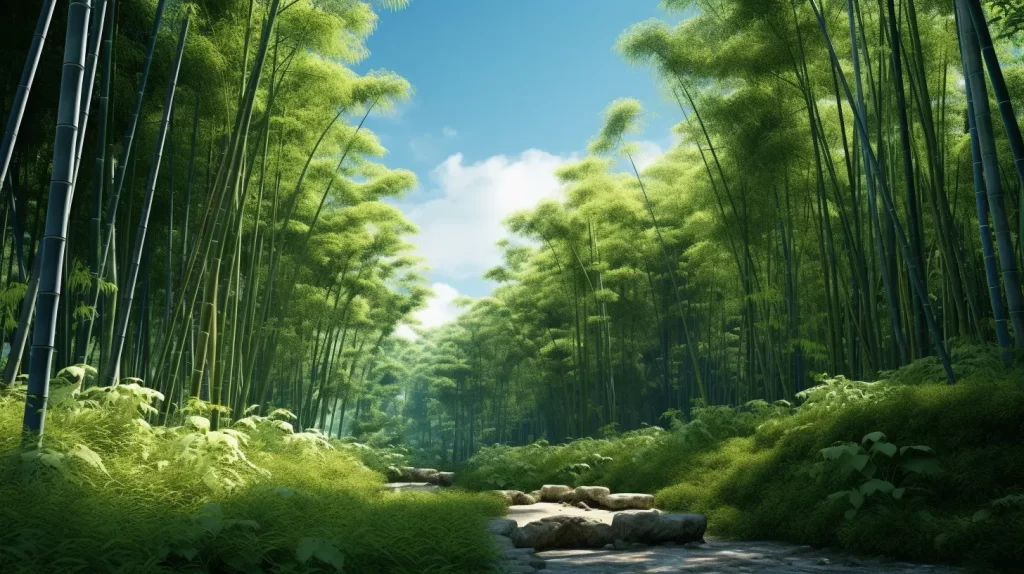
Bamboo viscose is an ecofriendly and sustainable fabric made from the cellulose of bamboo plants. It is highly praised for its soft and luxurious texture, and it is a popular choice for those looking to support an ethical production process. Let’s peel back the layers of what makes bamboo viscose a green champion.
Green and Clean: The Eco-Friendly Side of Bamboo Viscose
Bamboo is a superstar in the sustainability world. It grows fast, doesn’t need a ton of water or pesticides, and bounces back quickly after harvesting. Here’s where bamboo viscose stands out:
- Renewable Resource: Bamboo is a fast grower, making it a sustainable choice compared to other materials.
- Chemical Use: While it’s true that bamboo itself doesn’t need nasty chemicals to grow, the process to turn it into viscose does use chemicals. The good news is that advancements in manufacturing are aiming to make this process cleaner and greener.
- Biodegradability: At the end of its life, bamboo viscose can biodegrade, returning to nature without leaving much of a footprint.
Ethically Made: Understanding the Production Ethics of Bamboo Viscose
When we dive into how bamboo viscose is made, it’s all about balancing eco-friendliness with practicality. While traditional methods of producing viscose can be chemical-intensive, the industry is shifting towards more sustainable practices, like closed-loop systems that recapture and reuse chemicals. This reduces waste and lessens the environmental impact.
Here’s the scoop on bamboo viscose:
- Soft and Strong: Bamboo viscose holds its own in the world of fabrics with its softness and durability.
- Eco-Friendly Manufacturing: The move towards eco-friendlier manufacturing processes is making bamboo viscose an even better choice for those who are environmentally conscious.
In a nutshell, bamboo viscose brings together the best of nature and human ingenuity. It’s a fabric choice that lets you enjoy luxury and comfort, while also giving a high-five to Mother Earth. Of course, we always recommend checking into the manufacturing processes for the specific products that you are looking to purchase.
Understanding the Production Process (Simplified)
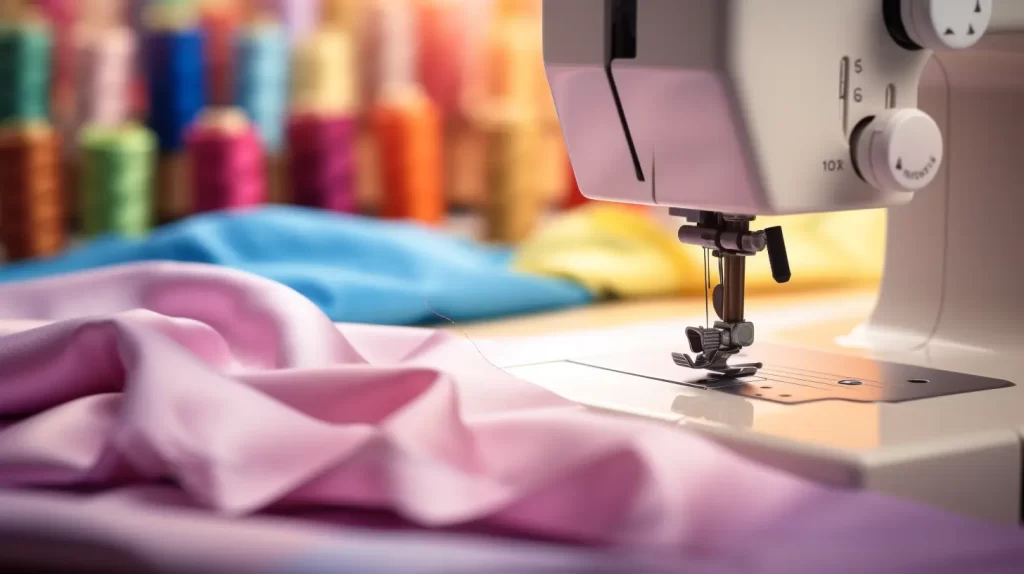
Ever wondered how Bamboo Viscose goes from a plant to the cozy fabric in your favorite shirt? Let’s take a simple stroll through the journey of Bamboo Viscose production. It’s a bit of science mixed with environmental consciousness!
Bamboo Viscose 101: A Simple Guide to How It’s Made
Bamboo Viscose is a bit of a marvel. It starts its life as bamboo, a super renewable resource. Here’s how it transforms into the fabric we love:
- Harvesting Bamboo: First, we get the bamboo. This plant is pretty fast-growing and doesn’t need much pampering, making it a sustainable choice.
- Extracting the Good Stuff: The harvested bamboo is then processed to extract cellulose, which is like the building block for our fabric.
- Dissolving Cellulose: This cellulose is then dissolved in a solution (here’s where the science magic happens!), turning it into a viscous substance.
- Spinning Into Yarn: This viscous substance is then spun into yarn. Think of it like a cotton candy machine spinning sugar into those fluffy treats.
- Weaving the Fabric: Finally, this yarn is woven into bamboo viscose fabric, ready to be turned into all sorts of stylish and comfy items.
This is a bit of a simplification (just a bit), but this is essentially the core of how bamboo is turned into our favorite clothes!
Eco-Friendly Manufacturing: The Closed-Loop Production Process
Now, let’s talk about how eco-friendly this process is. The ideal way to make bamboo viscose is using a closed-loop system. This means:
- Minimizing Waste: The chemicals used to dissolve the bamboo pulp are captured and reused, which significantly cuts down waste.
- Energy Efficiency: This method is also energy-efficient, making the whole process kinder to our planet.
- Reducing Carbon Footprint: By recycling and reusing, the closed-loop system reduces the overall carbon footprint of the production.
In essence, bamboo viscose is more than just a fabric; it’s a choice for a better, more sustainable future. It’s a fabric that lets you enjoy luxury without the guilt, knowing that it’s produced with care for our environment.
Choosing High-Quality Bamboo Viscose Products

When it comes to choosing bamboo viscose products, quality should be a top priority. To help ensure the best product, it’s important to understand the durability and maintenance requirements of bamboo viscose as well as to consider tips for choosing high-quality products.
Quality Matters: Tips for Choosing the Best Bamboo Viscose
Picking high-quality bamboo viscose is like finding a hidden gem. Here are some tips to help you make the best choice:
- Check the Label: Look for “bamboo viscose” or “bamboo rayon” on the fabric content label. This confirms you’re getting the real deal.
- Certification Counts: Keep an eye out for certifications from reputable third-party organizations. This is like a stamp of approval for ethical and quality standards.
- Know Your Maker: Do a bit of homework on the brand or manufacturer. A good track record in producing high-quality bamboo fabric is a promising sign.
Addressing Common Concerns: Durability and Maintenance of Bamboo Viscose
Bamboo viscose isn’t just about looking good; it’s also about lasting long and easy care:
- Built to Last: Bamboo viscose is known for its strength and durability. It’s not just a pretty face; it’s tough enough to handle regular wear and tear.
- Easy Care: While it loves a gentle wash in cold water and air drying, bamboo viscose is generally low maintenance. It’s also resistant to wrinkles, which is a big plus if you’re not a fan of ironing.
- Comfort is Key: Thanks to its lightweight and breathable nature, bamboo viscose is super comfortable for all-day wear. It’s a fabric that doesn’t just look good; it feels good too.
In short, bamboo viscose combines style, sustainability, and practicality. With a little bit of care and the right choice, you can enjoy this eco-friendly fabric in your everyday fashion and home textiles.
The Future of Bamboo Viscose in Sustainable Fashion
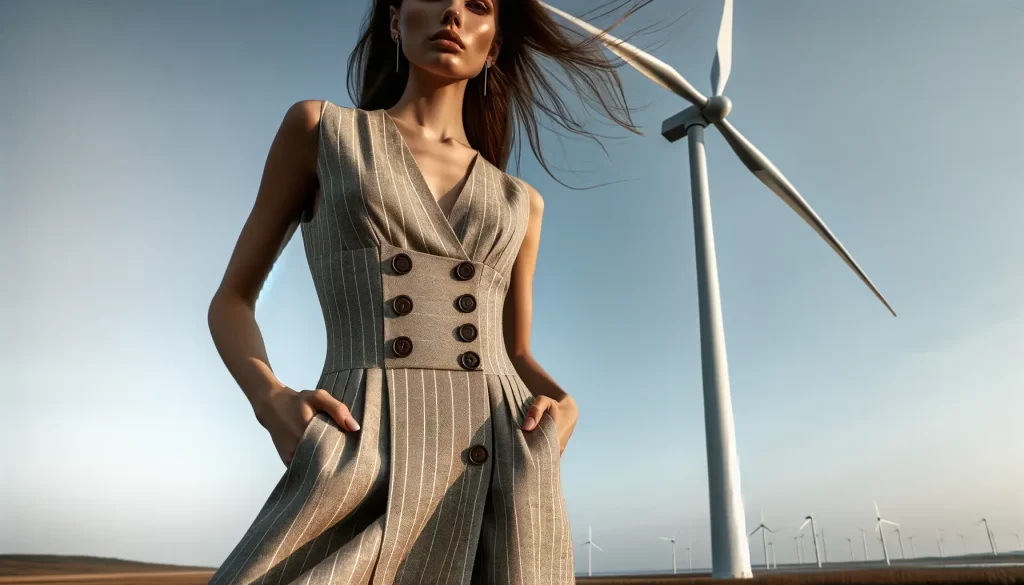
Fashion’s future is getting a green makeover, and bamboo viscose is leading the charge! As the industry embraces more sustainable practices, this eco-friendly fabric is taking center stage. Let’s explore how bamboo viscose is shaping the future of fashion with its blend of durability, breathability, and eco-consciousness.
Ahead of the Curve: Innovations in Bamboo Viscose for Fashion
Bamboo viscose isn’t just about being part of the fashion scene; it’s about redefining it. Thanks to some pretty cool advancements, it’s becoming a game-changer:
- Eco-Friendly Manufacturing: The production of bamboo viscose is getting greener. Think processes that use less water and energy, making a big difference in reducing the environmental footprint.
- Art Meets Science in Weaving: The latest weaving techniques are turning bamboo viscose into not just fabric, but a canvas for luxury and creativity. The result? Fabrics that are both intricate and sustainable.
- Tough Yet Tender: New developments have enhanced the strength and durability of bamboo viscose, so it’s not only soft but also tough enough for daily wear.
These cutting-edge innovations are catapulting bamboo viscose to the forefront of sustainable fashion. It’s becoming the fabric of choice for those who love style but also want to make a positive impact on our planet.
Conclusion
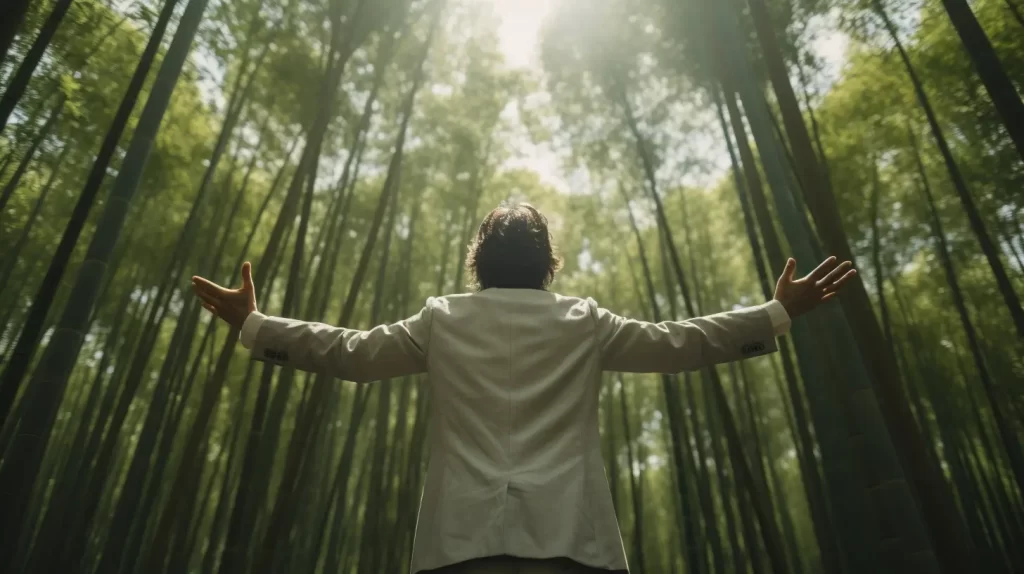
As we wrap up our journey through the world of bamboo viscose, let’s reflect on what this means for you, the eco-conscious consumer, and the fashion world at large.
Wrapping Up: The Takeaway on Bamboo Viscose for Eco-Conscious Consumers
Bamboo viscose is more than just a fabric; it’s a statement of sustainable living. For those who prioritize eco-friendliness without compromising on style and comfort, it’s a match made in heaven. Here’s why bamboo viscose stands out:
- Eco-Friendly Choice: Made from the rapidly renewable resource of bamboo, it’s a big thumbs-up for sustainability.
- Soft and Luxurious: Who says eco-friendly can’t be plush? Bamboo viscose is all about delivering comfort in style.
- Breathable and Moisture-Wicking: Ideal for both hot and cold climates, it keeps up with your lifestyle, making it practical for everyday wear.
- Cost-Effective: While offering so many benefits, it’s also kinder to your wallet compared to some alternatives.
Bamboo Viscose: A Step Towards Sustainable Fashion
Choosing bamboo viscose is a step towards a more sustainable future in fashion. It’s a fabric that lets you enjoy the best of both worlds – indulging in luxurious softness while knowing you’re making an eco-responsible choice. It’s not just about the clothes we wear but about the statement we make and the impact we have on our planet.
In the end, bamboo viscose isn’t just a trend; it’s a shift towards more thoughtful, sustainable fashion choices. It’s a choice that says you care – about style, comfort, and most importantly, the health of our planet.
Bamboo FAQ
What is bamboo fabric, and how is it different from traditional fabrics?
Bamboo fabric, often called bamboo viscose or bamboo rayon, is made from the fibers of bamboo plants. Unlike traditional fabrics, it is derived from a renewable source and is known for its softness and breathability. Bamboo fabric is generally considered more eco-friendly than synthetic materials because bamboo grows quickly and doesn’t need to be replanted often.
How is bamboo rayon made, and what makes it distinct from other materials?
Bamboo rayon is made by chemically processing bamboo fibers into a pulp, which is then dissolved and spun into threads. This process makes bamboo rayon distinct due to its softness and silk-like texture. Unlike materials made from wood pulp or synthetic fibers, bamboo rayon is sustainable and eco-friendly.
In what ways are products made from bamboo, like bamboo sheets and clothing, eco-friendly?
Products made from bamboo, such as bamboo sheets and clothing, are eco-friendly because bamboo grows rapidly, requires fewer chemicals like pesticides to grow, and regenerates naturally. This makes bamboo a sustainable choice. Additionally, bamboo fabric’s ability to biodegrade is a significant ecological advantage over synthetic fabrics.
What are the breathability benefits of clothing made from bamboo compared to synthetic materials?
Clothing made from bamboo is highly breathable, making it an excellent fabric for regulating body temperature and keeping the wearer comfortable in various climates. This breathability surpasses many synthetic materials, which can trap heat and moisture.
Is pure bamboo fabric more sustainable than other natural fibers?
Pure bamboo fabric is often considered more sustainable than other natural fibers like organic cotton. Bamboo doesn’t require as much water or pesticides for growth and regenerates quickly. However, the sustainability of bamboo fabric also depends on the manufacturing process, particularly the use of toxic chemicals. It’s always best to check the manufacturing process for your specific manufacturers and brands.
How do viscose bamboo and bamboo rayon differ in terms of environmental impact?
Viscose bamboo and bamboo rayon are similar, with the primary difference being in the labeling. Both are made by chemically processing bamboo, but the environmental impact can vary based on the manufacturing process. Closed-loop processes, which recycle water and solvents, are more eco-friendly.
What is the process involved in the production of bamboo rayon, and how does it affect the fabric’s quality?
The process of making bamboo rayon involves breaking down bamboo fibers using chemical solvents, which are then regenerated into fibers. This process affects the fabric’s quality by creating a material that is soft, lightweight, and has a drape similar to silk, making it a luxurious fabric choice.
How is viscose made from bamboo fabric, and what are its primary uses?
Viscose made from bamboo fabric is created by dissolving bamboo pulp in chemicals and spinning it into fibers. This process results in a versatile textile used in various products, including bamboo bedding, clothing, and other types of fabric.
In terms of durability and comfort, how does fabric made from bamboo compare to cotton?
Fabric made from bamboo is often softer and more breathable than cotton, making it comfortable for sensitive skin. In terms of durability, bamboo fabric can be less durable than cotton and may require more delicate care to maintain its quality.
What are the unique properties of viscose from bamboo fabric that make it suitable for a variety of textile applications?
Viscose from bamboo fabric is known for its softness, breathability, and moisture-wicking properties, making it an excellent fabric for a range of textile applications. Its ability to drape well also makes it suitable for luxurious clothing and bedding. Bamboo viscose is also a popular choice for eco-conscious consumers due to its source from organically grown bamboo.

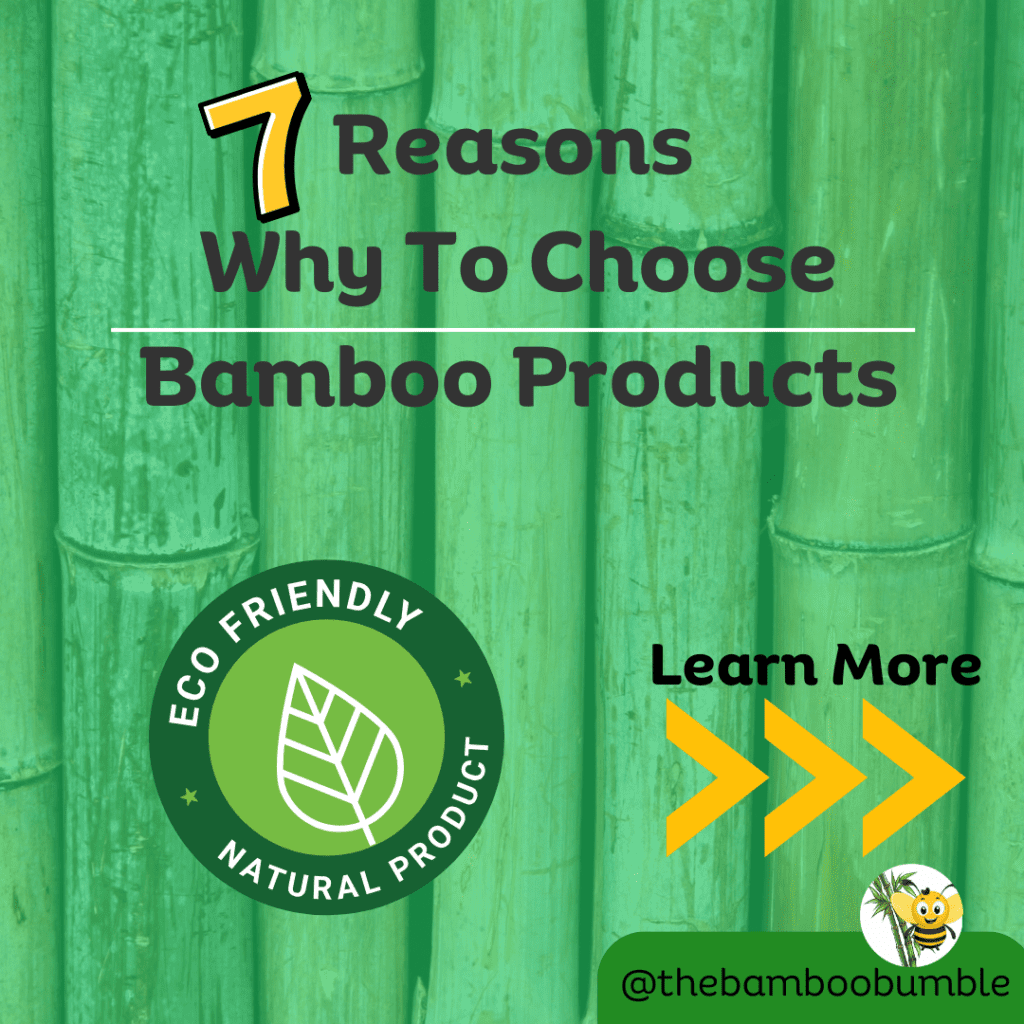

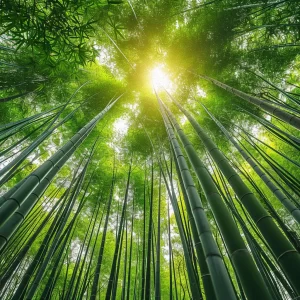
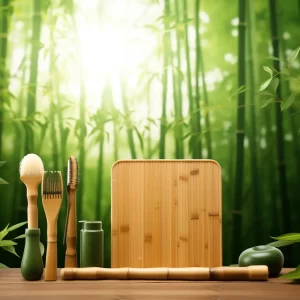
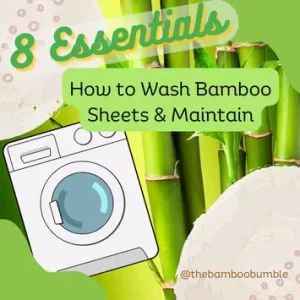
[…] What is Bamboo Viscose or Bamboo Rayon? […]
[…] What is Bamboo Viscose or Bamboo Rayon?2023-12-09 […]
[…] What is Bamboo Viscose or Bamboo Rayon? […]
[…] What is Bamboo Viscose or Bamboo Rayon? […]
[…] What is Bamboo Viscose or Bamboo Rayon? […]